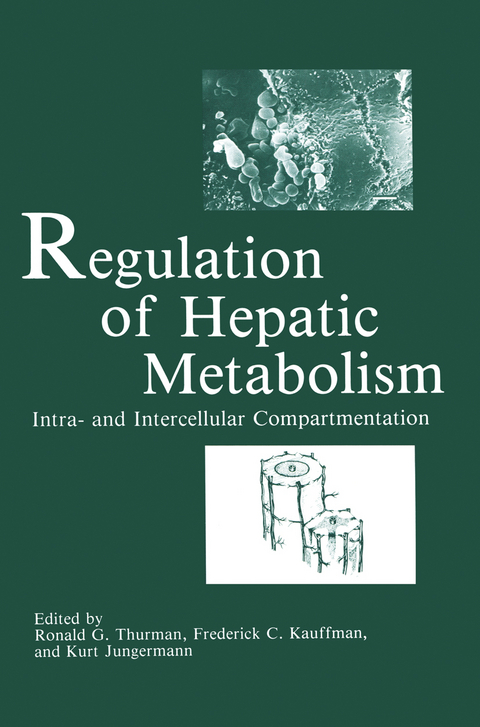
Regulation of Hepatic Metabolism
Springer-Verlag New York Inc.
978-1-4684-5043-9 (ISBN)
I. Liver Structure.- 1 Liver Structure and Innervation.- 2 Hepatic Hemodynamics and Microcirculation.- II. Methods.- 3 Histology and Histochemistry.- 4 Immunohistochemistry.- 5 Quantitative Histochemical Measurements within Sublobular Zones of the Liver Lobule.- 6 Separation of Functionally Different Liver Cell Types.- 7 New Micromethods for Studying Sublobular Structure and Function in the Isolated, Perfused Rat Liver.- 8 Redox Scanning in the Study of Metabolic Zonation of Liver.- III. Distribution of Metabolic Functions.- 9 Metabolism of Carbohydrates.- 10 Metabolism of Lipids.- 11 Metabolism of Amino Acids and Ammonia.- 12 Lobular Oxygen Gradients: Possible Role in Alcohol-Induced Hepatotoxicity.- 13 Biotransformation and Zonal Toxicity.- 14 Protein Synthesis and Secretion.- 15 Bile Acid Metabolism.- IV. Induction of Liver Cell Heterogeneity.- 16 Zonal Signal Heterogeneity and Induction of Hepatocyte Heterogeneity.- V. Speculations and Directions for the Future.- Challenges for the Future.
| Zusatzinfo | 510 p. |
|---|---|
| Verlagsort | New York, NY |
| Sprache | englisch |
| Maße | 152 x 229 mm |
| Themenwelt | Sachbuch/Ratgeber ► Natur / Technik ► Garten |
| Medizinische Fachgebiete ► Chirurgie ► Viszeralchirurgie | |
| Medizinische Fachgebiete ► Innere Medizin ► Gastroenterologie | |
| Medizinische Fachgebiete ► Innere Medizin ► Hepatologie | |
| Medizin / Pharmazie ► Medizinische Fachgebiete ► Pharmakologie / Pharmakotherapie | |
| ISBN-10 | 1-4684-5043-3 / 1468450433 |
| ISBN-13 | 978-1-4684-5043-9 / 9781468450439 |
| Zustand | Neuware |
| Haben Sie eine Frage zum Produkt? |
aus dem Bereich


